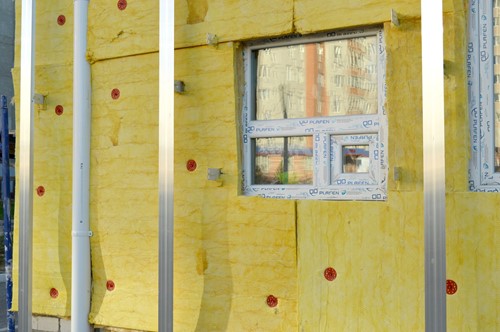Email: RothsteinM@gmail.com

One primary reason everyday people bear with drafty homes stems from construction costs. Old houses and those with failing exterior wall insulation seem to require costly demolition. The idea that drywall or select wood wall materials require removal and replacement often causes property owners to take a deep breath and think about something else.
The good news is homeowners enjoy increased access to quality insulation materials which may not require wall demolition.
The two leading materials that generally do not require wall removal are loose-fill cellulose and spray foam. These products task installers with drilling small holes — between ½ and two inches — in strategic locations. Specialized equipment then funnels the material into the exterior walls between the framing studs.
The idea is to pack the vacant spaces with material that deters air penetrations. These are differences to consider between loose cellulose and spray foam materials.
Not every handy DIY homeowner possesses the equipment or experience to effectively install insulation without removing walls, which is why it's essential to work with an experienced professional installer.
Consult with an experienced insulation contractor that uses both materials. Their assessment of the house could prove invaluable in terms of selecting the best option. And, don't hesitate to field multiple quotes before writing a check because installation costs can differ significantly.

Active in residential brokerage since 1985, Michael enjoys a loyal following of past buyers and sellers. Prior to entering brokerage, he studied culinary arts and managed restaurants in the Boston area. Born and raised in Newton, Michael is very familiar with the Greater Boston area. His seven-day-a-week commitment to his profession serves his clients and customers well. His educational background includes The Johnson & Wales Culinary Institute, The Lee Institute for Real Estate, and The Tom Hopkins and Floyd Wickman Sales Training courses.
In recognition of his completion of the prescribed courses in real estate practice and ethics, Michael has earned the distinguished GRI (Graduate, Realtor Institute) designation. He continues his long-standing membership in the National Association of Realtors and is an avid fly fisherman, musician, and outdoor enthusiast.
Michael was awarded the International President's Circle Award for sales expertise, market knowledge, and dedication to clients for 2020 and 2021. In 2022 and 2023 he was awarded the International Presidents Elite Award, representing the Top 2% of Hammond Residential & Coldwell Banker Agents Worldwide, for demonstrating exceptional sales production, ambition and his commitment to the Real Estate Industry.